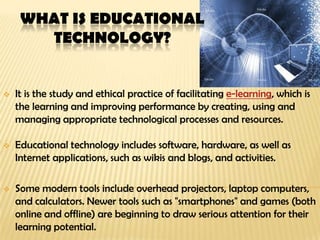Educational technology refers to the use of technology to improve learning and involves software, hardware, and internet applications. It has its origins in human prehistory and has evolved over time from the use of mechanical calculators in the 19th century to modern tools like smartphones, games, and educational software. Today, educational technology incorporates a wide variety of digital tools in classrooms, including interactive whiteboards, laptops, tablets, and online resources.









